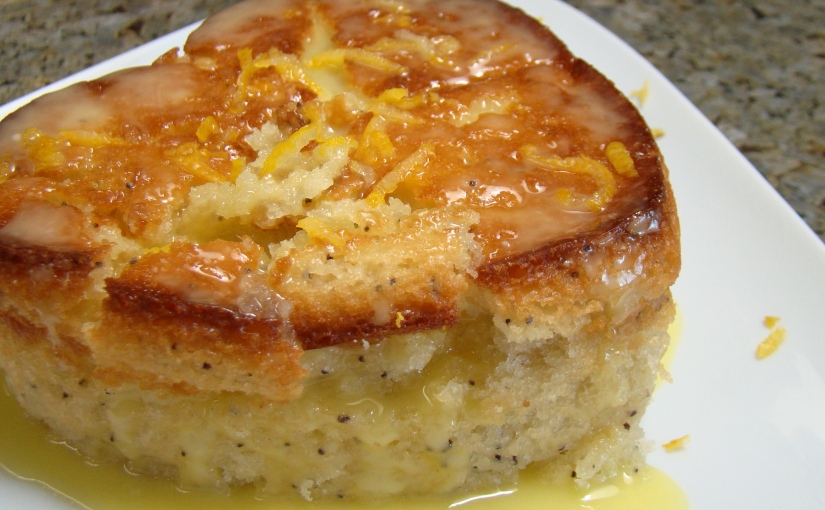“ ‘A little beer would suit me better, if it is all the same to you, my good sir,’ said Balin with the white beard. ‘But I don’t mind some cake — seed-cake, if you have any.’
“ ‘Lots!’ Bilbo found himself answering, to his own surprise; and he found himself scuttling off, too, to the cellar to fill a pint beer-mug, and then to a pantry to fetch two beautiful round seed-cakes which he had baked that afternoon for his after-supper morsel.”
From The Hobbit by J.R.R. Tolkien
I first heard this passage read aloud when I was eleven or ten years old. I can’t recall if it was Mrs. Nef or Mrs. Hansen who read The Hobbit to our class, but I believe even then my attention to food in fiction was already fermenting in my young subconscious. Part of one of likely thousands of the kind throughout my childhood and into my adulthood that set me on my postgraduate research path. I remember the historical food from the American Girl books, the pizza sandwich in The Hot and Cold Summer by Johanna Hurwitz, Lucy and the Faun’s tea party and Turkish delight from The Lion, the Witch, and the Wardrobe, and of course the crazy concoctions of Roald Dahl. I think I checked out Roald Dahl’s Revolting Recipes and the American Girl cookbooks from the school library at least ten times each.
It’s likely I’m one of those “supertasters” and when I was about five years old or so, I know my palate changed. I used to eat almost everything in the fruit and vegetable kingdoms as a toddler, according to my parents. I’d fill my plates at the Sizzler salad bar with actual salad, but apparently overnight I rejected anything that wasn’t Kraft Mac and Cheese, and a handful of other foodstuffs.
So when the unexpected party happened to Bilbo and me as a ten or eleven year old, I think most of the vicarious feast was lost on me at the time. Except for the seed cakes. Something stuck in my mind that Bilbo’s seed-cakes had to be similar to the lemon poppy seed muffins my mom loved.
Fast forward to 2018. I’m a year into my studies and the following recollection is only a few days old:
The British Library has been hosting a wonderful series of talks called the Food Season. When I first got the announcement a few months ago I immediately signed up for six different events, and I wish I could have gone to them all. Alas, being a postgraduate student is not something that grows one’s bank account. Still, the deficit was very worth it. I’ve heard and talked to some wonderful people and it has given me a lot to think about for my PhD and my upgrade due to take place in a few weeks.

At the “(Not So) Fictional Food” event food historian Pen Vogler and Australian food blogger Kate Young. Since I’ve been so focused on my novel (even if my word count doesn’t exactly reflect this) and other reading, I didn’t get a chance to look into either of the panelists before the event. Of course, for my last event, Kate Young’s wheelhouse and mine are on very similar axels. Her blog, thelittlelibrarycafe.com and her articles for presses such as The Guardian, is about recreating food in fiction, and was specifically inspired to do so by the Harry Potter Series. It was one of those “I see a definite kindred writer’s spirit” moments.
The conversation between Pen and Kate turned to The Hobbit and Kate said when she went about recreating Bilbo’s seed-cakes she used caraway seeds. My brain was completely taken aback, what about my mom’s favorite translated into lemon poppy seed-cakes? Why didn’t that occur to her? Because surely that is what they’re supposed to be. It’s so obvious, isn’t it?
Also, my mind probably never went to caraway as they share a flavor profile with anise and my mom is the only one in our family who actually seems to like licorice. Seriously licorice = I’d rather have broccoli. Well actually, on second thought, I think I’d rather have the licorice.
There was a short break as Pen and Kate passed around the tasting part of the evening. A drink where I could immediately smell the woody-cured alcohol and thus declined a taste of, I’ve never been able to enjoy chardonnay, whiskey, bourbon, or brandy (supertaster palate remember?). Not that I don’t love the umami-ness of wood smoke in barbeque, (I’ll add smoked paprika to just about any dish of late) it’s just never been something I’ve liked in a drink. The couple sitting next to me took samples of Pen’s drink.
Kate’s offering resembled a posh sausage roll, which of course that’s what it was. Both recipes were inspired, of course, by food in fiction. My mind went blank. I could not for the life of me figure out what book was known for sausage rolls. I even tried to think of any obscure reference to the Greggs and pub-grub product that I had ever come across in fiction or in my research into the vast world of food in fiction. There was also a vegetarian alternative, which turned out to be spanakopita from Middlesex.
I made a comment to the couple sitting next to me that I couldn’t figure out where the sausage rolls were from either. I then also said that when I’d imagined the seed-cakes in The Hobbit I had imagined them to be poppy seed cakes. The woman next to me said she’d once imagined them to be pumpkin or sunflower seed cakes.
My mind of course was blown, but it was one of those “duh, Ginger” moments. Once again, I was reminded of how food means so many things to so many different people. That it is at once a great unifier and an indicator of difference. People who eat _______ are likely to be _______ people. Which would be a fun Mad Libs exercise.
People who eat carrots are likely to be Bugs Bunny people.
The sausage rolls turned out to be one of the most obscure food references in Harry Potter, one that even I missed or never really let it stick in the vast expanse of useless knowledge my brain seems to love.
“It was someone being tortured!” said Neville, who had gone very white, and spilled sausage rolls all over the floor. “You’re going to have to fight the Cruciatus curse!”
From Harry Potter and the Goblet of Fire by J.K. Rowling
In my circle, of the food in fiction and/or of the science fiction fantasy aficionado, the great joke is C.S. Lewis is a god writer because he managed to convince untold numbers of children that Turkish delight is a delicious confectionary enough to betray your family over. Then there are those that respond, “Well you just haven’t had good Turkish delight.” The context of Turkish delight in post-WWII, when Britain was still rationing sugar, is one that has been written about several times and I have witnessed this in discussion more than a few times so far. Additional commentary on it may find itself in some of my future writing, but for now it emphasizes a point.
People who eat food from fiction, are likely to be food loving people. They are also likely to be people who recognize the power of words and the power of food imagery. Whether it comes from real food memory, or one that sticks by association.
“I close my eyes and I want to understand where I am, cooking is about emotion, it’s about culture, it’s about love, it’s about memory.”
– Chef Massimo Bottura

© Ginger Lee Thomason and foodandcheerandprose.com, 2017-2018. Unauthorized use and/or duplication of this material without express and written permission from this site’s author and/or owner is strictly prohibited. Excerpts and links may be used, provided that full and clear credit is given to Ginger Lee Thomason and foodandcheerandprose.com with appropriate and specific direction to the original content. Featured image by John Cummings found here. Image of Kate Young and Pen Vogler taken by Ginger Lee Thomason with an iPhone 8, 2018. Image of British Library and St Pancras taken by Ginger Lee Thomason with an iPhone 8, 2018.

